If you’re in the market for a top end Nikon wide angle zoom, you’ll have no doubt narrowed it down to either the 14-24 or the 16-35 VR. But which to get? One is legendary in sharpness from f2.8 onwards but the other is a bit cheaper, has more range and VR. But do you really need VR on a lens like this, or do you really need f2.8 on what many would consider is ultimately just a landscape lens that you’d stop down anyway? Courtesy of the very kind folk over at B&H Photo, I spent a week with both whilst I was on the beautiful island of Maui, Hawaii. But, which one do I now want to add to my camera bag…
Update 2017: Until either of these lenses are replaced, the below is still relevant to those making a decision between the two. It may surprise some of you to know however, that I have actually added an 18-35G to my camera bag. Whilst a different level of lens entirely, and not as sharp as either of these two beasts wide open, it is surprisingly good stopped down to f8. I’ve used the 18-35G almost exclusively for my Back Garden Safari project, with excellent results. But if the 14-24 or 16-35 are more suited to you, read on and enjoy…
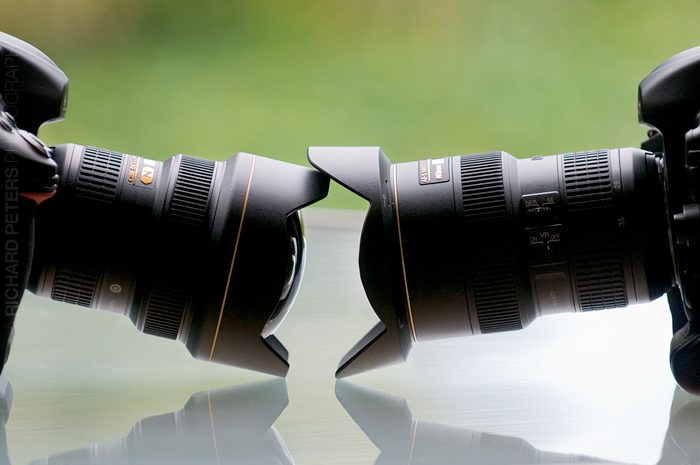
Head to head, The Nikon 14-24 f2.8 and 16-35 f4 VR
Ok, first things first. Although this is a review of sorts, I’m not classing it as an official review. The reason is simple, I only spent a week with these lenses and I don’t really think that is long enough to do them justice and get to know them and their full characteristics. I used them whilst on a trip away to Hawaii via a brief stop off in California, so I just got on with shooting rather than spending hours taking test shots of brick walls at every aperture. I just used the lenses in every day situations to take photos I wanted to take, and so what you’re about to read are my thoughts after spending a week with these lenses shooting real subjects, then having got back to the UK and reviewed the images taken with both. First there’s an overview of various aspects of both lenses, then my general thoughts afterwards.
A quick word about the sample images taken with the lenses in this article, none have had any corrective work for distortion or lens flare, they are processed with levels/contrast/saturation only.
Specs:
14-24 f2.8
Dimension: 98 x 131.5 mm / 3.9 x 5.2 in.
Weight: 1000g / 35.3 oz.
Field of View: 114° – 84° (90° – 61° with DX-format camera)
Supplied bag: Semi-soft Case CL-M3
Buy the 14-24 f2.8 here from B&H Photo
16-35 f4 VR
Dimension: 82.5 x 125 mm
Weight: 680g / 24.0 oz.
Field of View: 107° – 63° (83° – 44° with Nikon DX format)
Supplied bag: Flexible Lens Pouch CL-1120
Buy the 16-35 VR here from B&H Photo
Build quality differences.
Both lenses are classed as professional, and as such they both come with weather sealing
14-24:
Now potentially, I did a silly thing here. When presented with these two lenses all boxed up, the first thing I did was open the 14-24 (and who wouldn’t?) as I was excited to see what all the fuss was about with this beast. And I can confirm that whatever you have read about this lens, it doesn’t come close to the actual experience of holding it in your hands. The build quality is sublime. It’s beautifully weighted and feels like a tank. I own and have shot with various Pro lenses built to last, but something about the 14-24 makes it really stand out, maybe its that chubby shape which adds a more solid feel to the build (even if it is a placebo effect). The copy I had showed virtually no twist at the lens mount, unlike many other lenses I own, so when paired with various bodies it felt like an extension of the camera, which is very reassuring. The body is metal so there is no doubt it’s very sturdy and built to the demanding standards a pro expects. The only downside, is that huge bulbous front element which many may find isn’t protected enough by that built in lens hood. I certainly found my self feeling over protective when walking around with the camera hanging from the camera strap off my shoulder, especially when I was in crowded or busy places. And, with that huge front element comes an equally huge lens cap that slots over the front, and sits tight on the hood. A word of warning, if you’re a purist who hates to get your gear marked, you’ll be out of luck with the 14-24 as removing and replacing the lens cap marks the hood slightly every time you do it, due to a (needed) snug fit.
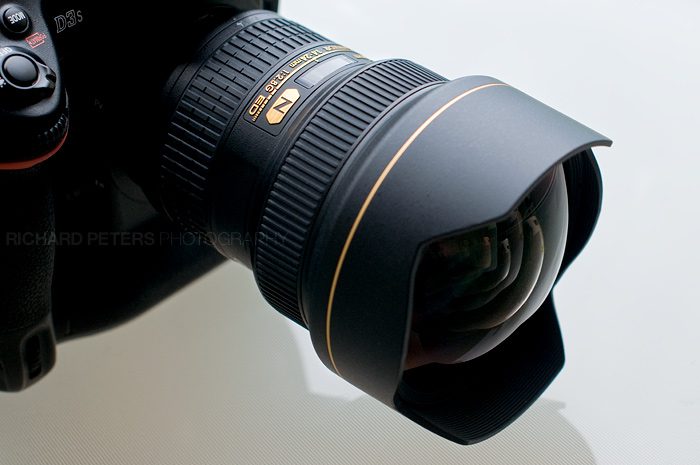
The 14-24 huge front element
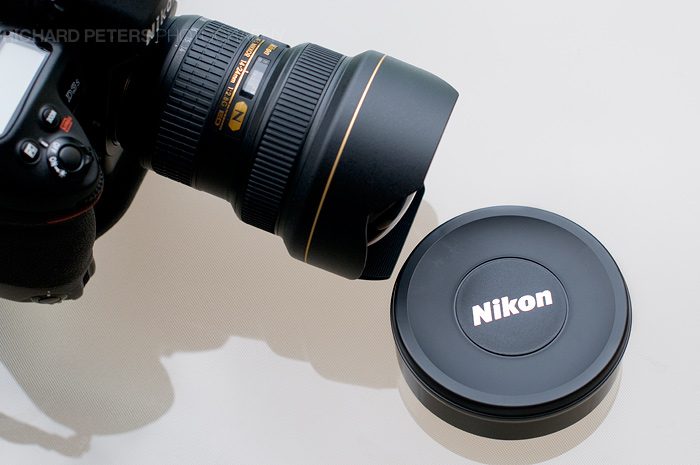
The huge 14-24 lens cap
16-35 VR:
I’ve got to admit, having just handled the 14-24, I was fully expecting to be disappointed with the feel of it’s cheaper little brother. After all, parts of this lens are made with (high quality) plastic as apposed to the mostly metal f2.8 bigger brother. But you know what, I was pleasantly surprised. Sure, the 16-35 doesn’t look as impressive, but the initial feel of this lens was far from disappointing. It also has a reassuring weight to it and just like it’s bigger brother it feels very robust and sturdy in the hand.
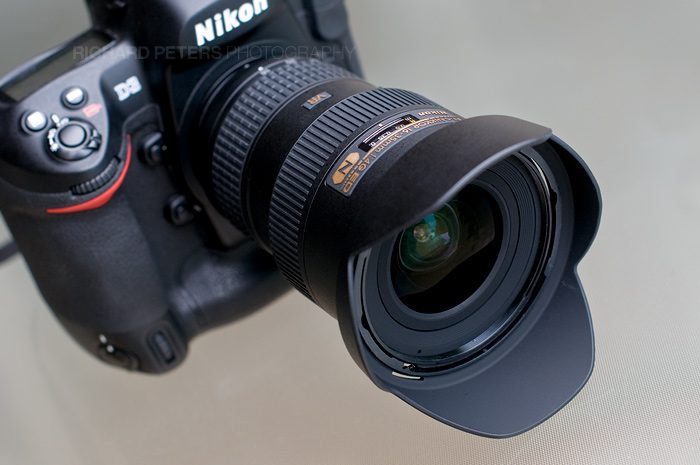
The 16-35 VR, a more modest front element
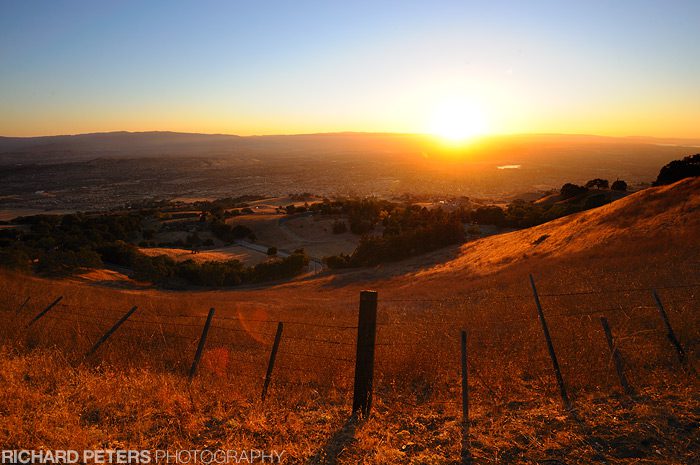
16-35 VR: San Jose hills at sunset
Controls and features.
Business as usual for both lenses. They feature the A/M – M switch that all AFS lenses are graced with. But of course the 16-35 has another switch for the VR, but misses out on the Active and Normal settings you find with many other VR lenses. Both zoom and focus rings are smooth to operate, with the 14-24 having a slightly narrower focus ring than the 16-35.
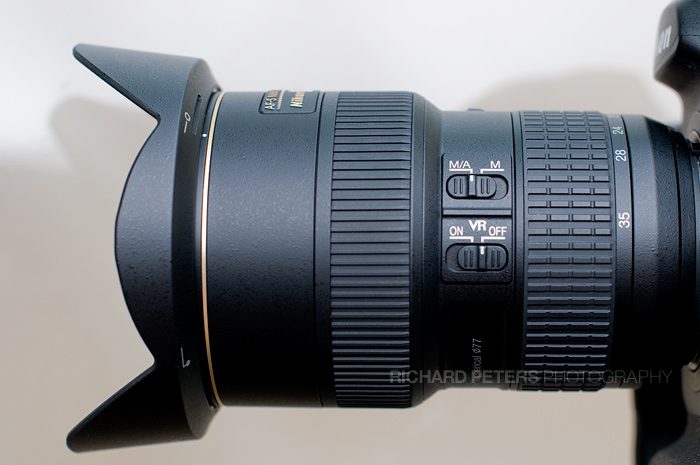
Nikon 16-35 controls
Focal range comparisons:
Either of these lenses set to the wide end offer a serious field of vision on an FX camera. Everything seems so far away and small! Zoom in a bit and with the 16-35 you are at least getting back in to the realms of normality at 35mm. And this for me makes it a slightly more useful walk about lens. On more than one occasion I found myself trying to twist the zoom ring of the 14-24 wanting to zoom in just that little bit more. But with it only being 24mm at the long end, it really does put it in the realm of specialist needs, so if you don’t have a regular subject to shoot that absolutely requires the widest of wide then you may not find yourself picking up the 14-24 as much as you should given the cost.
Focus speed variations.
No worries here. Both lenses are fast and accurate to focus, even in low light. On suitable bodies with good focus performance, such as the Dx range I didn’t really find myself ever thinking they seemed slow. But with wide angle lenses like these, you’d never really need ultra fast focus anyway so personally even if they were slow to focus I wouldn’t have been bothered.
Update 2017: Autofocus is improving all the time, making focus accuracy better and better. Where once good performance was held only for the flagship models, lower end bodies have excellent focus systems now. All of which make focus speed even less of a concern.
[clickToTweet tweet=”To this day, the question remains. Which Nikon wide angle is better, the 14-24 or 16-35?” quote=”To this day, the question remains. Which Nikon wide angle is better, the 14-24 or 16-35?”]
Image quality and optics.
Like I said near the start, I didn’t take loads of test images of brick walls etc with these lenses. That’s been done to death by others, and there are already some very very good technical reviews out there which will cover the finer details. I just simply used these lenses for real, on location, in real lighting and with real subjects. Both have Nano coating and of course I’m going to say the 14-24 is better, because it is! It is sharp right to the corners even wide open, it has less distortion and it absolutely deserves to be called one of Nikons sharpest zoom lenses ever made (actually, many people rate its optics over the wide angle primes!). Added to that it also has slightly better colour and contrast, although both lenses can show some flare depending on where bright light sources such as the sun are. That said, I shot in to the sun on several occasions and rarely did I find flare a problem. The 16-35 VR can certainly hold its own, so much so that at times when reviewing my images I had to double check the meta data to see which lens the photo was taken with. Don’t let that fool you in to thinking the 16-35 is virtually the same in performance, because in certain conditions it’s not, BUT, in a lot of conditions it’s performance isn’t as noticeably inferior. Stopped down the sharpness is acceptable out to the corners (DX shooters need not worry full stop!) and although it does have barrel and pincushion distortion it can be quite well hidden depending on the scene you’re trying to capture, with general landscapes looking just fine. Perspective distortion is also far more noticeable on the 14-24 due to it’s ultra wide focal lengths, where as the 16-35 isn’t so bad once you get up around the 28mm+ mark. It’s something that isn’t quite so apparent or problematic when taking landscapes but if you’re a wedding photographer thinking about taking large group shots, it’s something to keep in mind as people at the edges of the frame will appear stretched.
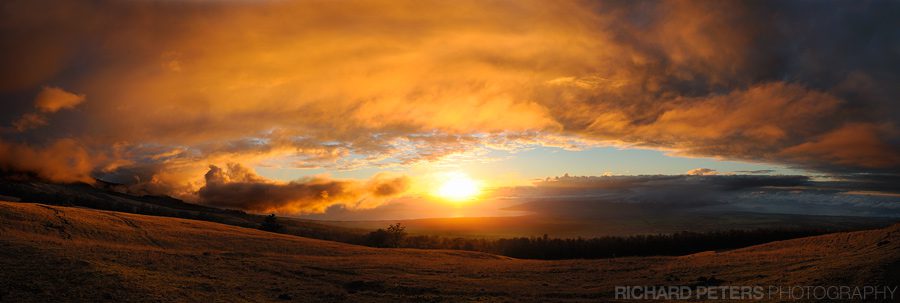
16-35 VR: 3 image stitch. Sunset from 3000 feet, Maui, Hawaii
You can view the 3 shot pano above in more detail at 1800 pixels wide, here.
Adding filters.
Ah yes. Filters. The stumbling block of the 14-24. Possibly it’s only real achilles heel. Lee Filters have produced a filter kit specifically designed for this lens and others have come up with their own solutions, but whatever way you look at it, this lens is not as convenient to use with filters as the 16-35 which has a standard 77mm thread. So, bad news if you’re a landscape photographer and already have a nice set of filters. But you knew that already. I only have two filters because I’m not really a landscape photographer, a screw in circular polarizer and a 10 stop ND filter. The CP filters doesn’t really work to well with ultra wide angles anyway because the lens covers such a large field of view, so the only filter it comes down to for me is the 10 stop ND filter. And I have to admit, although it’s not one I use ALL the time it would be annoying to have to spend several hundred pounds on a new filter and holder if I owned the 14-24, just to have one filtration effect!
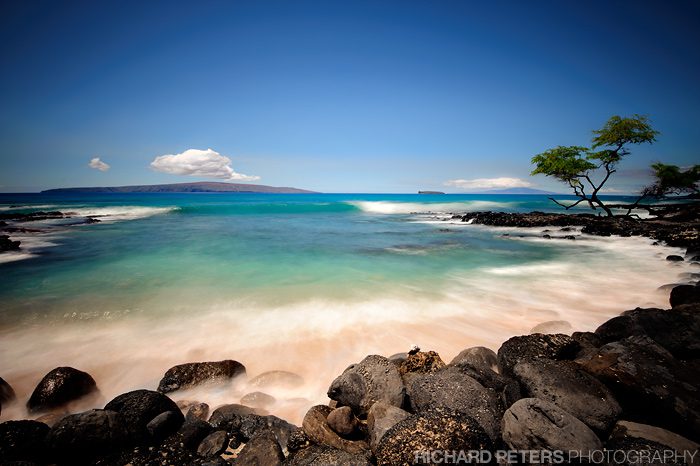
16-35 VR: f10, 4 seconds with ND 10 filter
Given that both these lenses are aimed more at landscapers it really is a shame that the mighty 14-24 is handicapped (but then, given the spec of the lens was there any way round this problem?), as if you DO need a set of filters, once you’ve added in the expense of a whole set of new ones it really puts the cost of the lens right up – and for many, that added extra money may make the difference in optical quality between these lenses seem even more insignificant.
To VR or not to VR. Is it essential?
VR II on the 16-35 is exceptionally quiet. This was my first experience of VRII and I have to say I don’t miss the louder chattering of the older version one bit. In fact, the first time I used the VR on the 16-35 I had to double check it was switched on! Admittedly I was outside, but it was quiet enough that I wasn’t sure it was on. But do you need VR on a lens with such a short focal length? That’s really for you to decide. If you have shaky hands then it will no doubt come in handy, or at a push if you need a slower shutter speed in low light but don’t have a tripod to hand it will help to an extent. Really though, it comes down to your ability to hold a camera still combined with what subjects you’ll be shooting. So for me, it’s a personal preference rather than a simple ‘yes’ or ‘no’ answer. One thing worth pointing out, is in this age for video DSLRs, the VR might help you get slightly smoother handheld video clips too. Personally, at these focal lengths, I think for a grab shot it’s handy to have but if I was taking a shot that counted, I’d always want to have a tripod available regardless.
EDIT: Since I initially wrote this, some good points were raised via email regarding VR being very handy in low light situations where a tripod isn’t a) allowed or b) possible, due to space restrictions etc. Very valid points that are well made.
My general thoughts
Having spent some time with both these lenses I was expecting to come away with a clear winner. But the reality is, it’s not as clear cut as I was expecting and both lenses are very good buys!
The 14-24 is everything you’ve heard it is and if you want the very best you really can’t go wrong. It’s sharp wide open, has good distortion control of straight lines and is built to last. Optically it’s the clear winner as you’d expect. BUT, it’s got it’s flaws, and it’s those which make the 16-35 stand out as a good choice. For a starter, there is the filter issue. With a standard 77mm thread on the front of it, the 16-35 VR is certainly more convenient to use if you already have a collection of filters. And the optics, although not quite as good as it’s bigger brother, are certainly not bad by any means – in fact they are very good. Given that the majority of you would more than likely be shooting mostly landscapes with this lens, the speed of f4 isn’t really too much of a problem as you’d stop it down a bit to get some extra depth of field anyway, and be shooting from a tripod.

Nikon 14-24 and 16-35 VR side by side
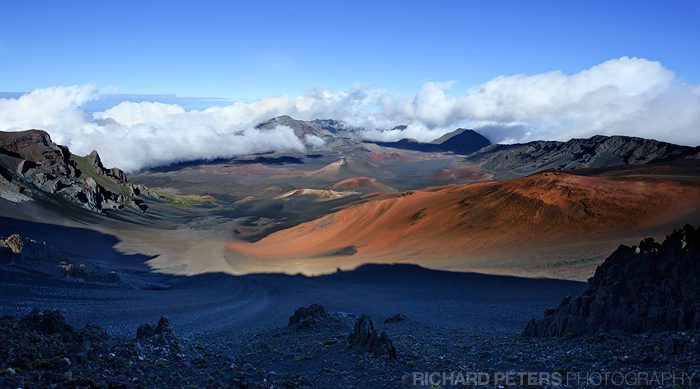
14-24: Haleakala Volcano crater, Maui, Hawaii
The 14-24 range really does aim it directly at specialist applications such as landscape or architecture photographers, where as the 16-35 is just that little bit more versatile with that extra reach (albeit small) making the lens slightly more practical in every day use (I certainly found myself surprised to be reaching for the 16-35 VR as much as I did!). But then add a camera like the Nikon D3 or D3s to the 14-24 and you have a serious low light beast. I visited the Monterey Bay Aquarium and was able to take photos of the various fish etc, in the most insanely low light conditions. The only trouble was having to wait between all the camera flashes from other people before I could take my shots!
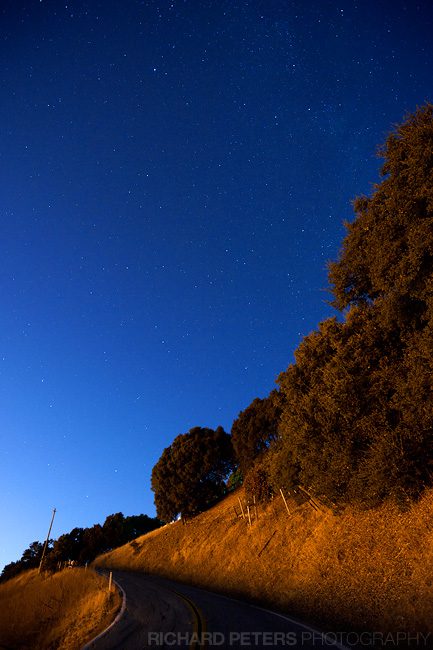
16-35 VR: Stars up in the San Jose hills
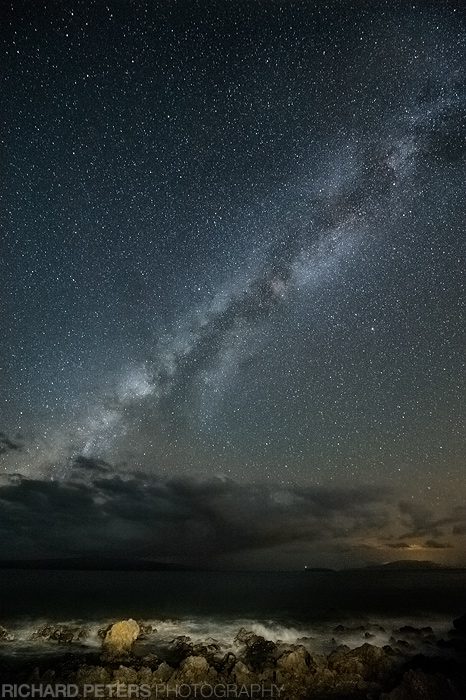
Milky Way over Maui
And then there is also astrophotography. The 14-24 combined with a low light high ISO camera can give some truly amazing images. I did use the 16-35 for a brief spell of astrophotography when I was in the hills of San Jose, California, but the 14-24 absolutely blows it away for this type of work. The extra wide field of view coupled with the sharpness at f2.8, which also allows more light through to the sensor, give some stunning views of the night sky, as I discovered in Hawaii. And you can read more about my experiences photographing the night sky in Hawaii, along with more 14-24 samples from doing so, here.
And don’t forget lenses you already own
As that can factor in too. For example, if you own the 24-70, the 14-24 would give the perfect match for focal length with the 16-35 VR giving too much overlap. But if you have the older 28-70 then the 16-35 might offer better value for money.
So, which Nikon wide angle to get. The 14-24 or 16-35?
I was grateful to have both lenses when I was away on my trip, as they both came in handy at different times. But if I had to sum it up, I would say:
Pick the 16-35 VR if you…
- Don’t need f2.8
- Don’t need the ultra wide field of view
- Do need a little more versatility with the focal range
- Do shoot landscapes and general images (i.e. walkabout lens – as much as I hate that phrase)
- Do have an extensive range of filters that work with 77mm thread
- Don’t mind having to fix some distortion from time to time
And pick the 14-24 f2.8 if you…
- Want the very best optics
- Need the extra stop of light (e.g. for serious wide field astrophotography)
- Need minimal distortion wide angle shots (architecture especially)
- Don’t use/need filters or don’t mind buying a new custom set of them
- Shoot in harsh or adverse conditions and need the tank like build quality
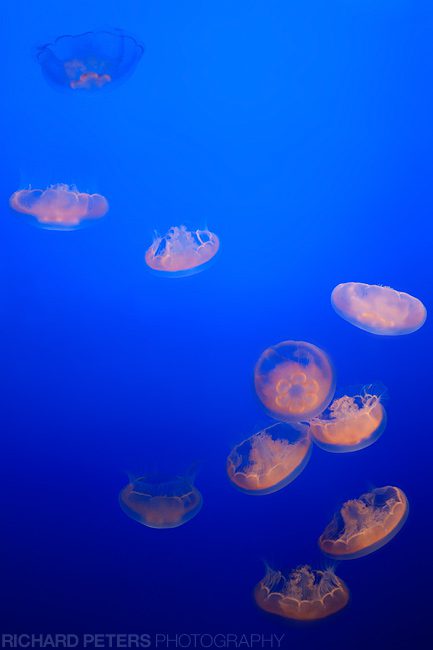
14-24: Jelly Fish at the Monterey Bay Aquarium
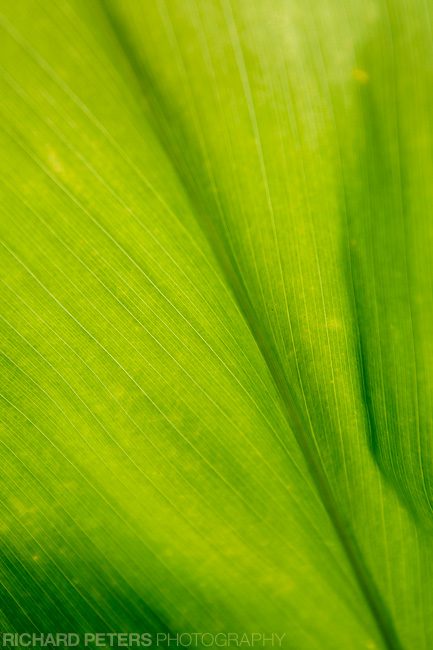
16-35 VR: Leaf detail
After reading this article, if you’re thinking I’ve not really offered any new advice compared to what’s out there, I apologise. But that’s because the reality is everyone who has used these lenses pretty much comes to the same conclusions about them. As you can see, the 14-24 sells itself as more of a specialist lens for those that need the very best, including 10/10 optics. Certainly if you’re a pro who shoots in a lot of adverse weather conditions or have specific applications for the ultra wide field of view it’s the one to go for. But if you need a bit more versatility and are happy with 8 1/2 out of 10 optics, the 16-35 VR should be your lens of choice.
Me? I wish I could combine the two, because although you can’t go wrong with either, they both have their own strengths and weaknesses. If there was a 14-35 f2.8 we’d be laughing (but can you imagine the size of such a beast!!).
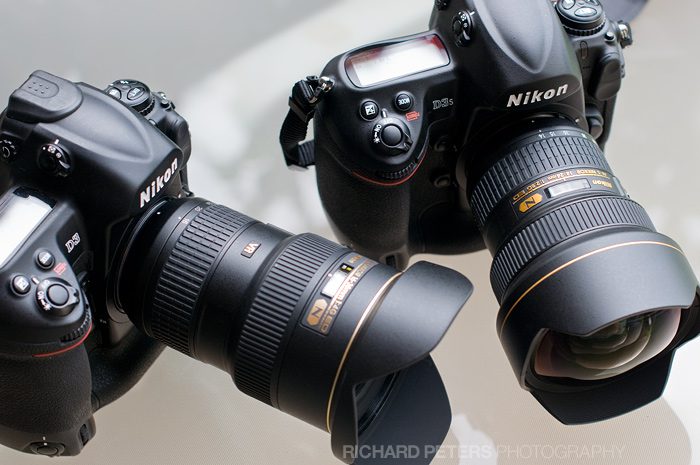
The D3 and D3s wearing the 14-24 and 16-35 VR
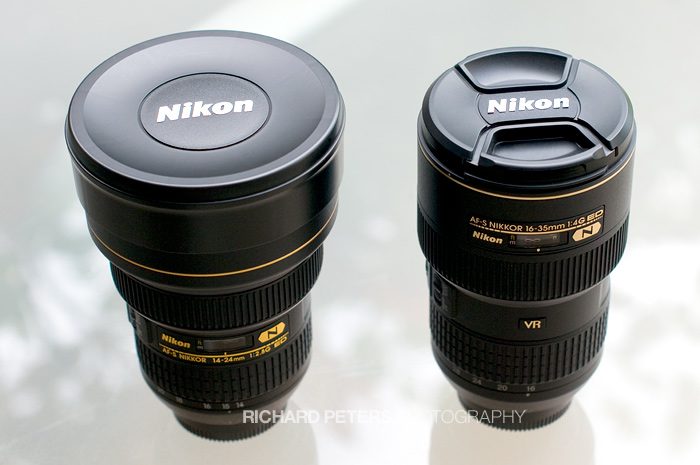
The Nikon 14-24 and 16-35 VR
One thing I can tell you with certainty, is it was a very sad day when I had to box these beautiful lenses back up and return them!








